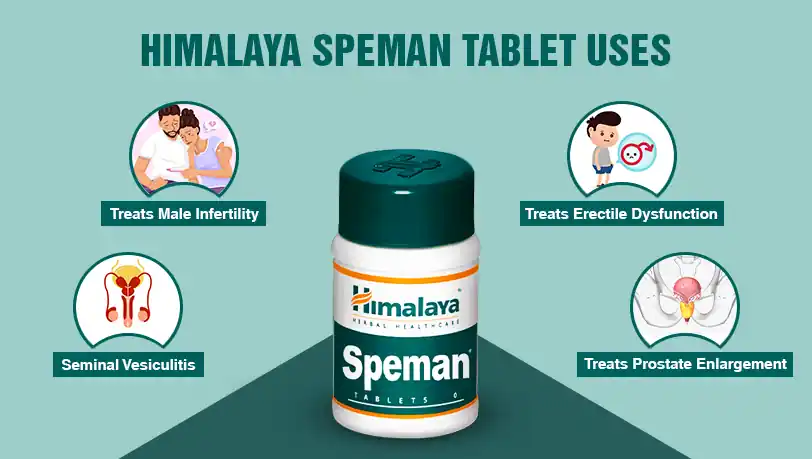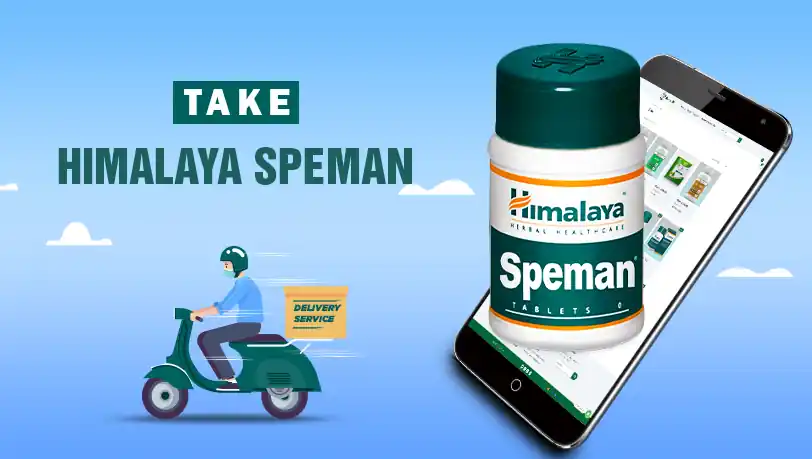Himalaya Speman tablet uses is an ayurvedic herbal supplement that is popularly used for the treatment of male infertility and other reproductive health issues. The tablet is made from a blend of natural herbs and minerals that have been traditionally used in Ayurveda for their potent aphrodisiac and spermatogenic properties. Himalaya Speman tablet uses are varied and extensive, and in this article, we will discuss them in detail
Himalaya Speman tablet uses
Serpina Tablet
With the growing recognition of the value of herbs, it is surely time to examine the professional therapeutic use of these herbs.
Get NowOne of the most common Himalaya Speman tablets uses is the treatment of male infertility. Infertility is a condition that affects millions of couples worldwide, and it can be caused by a wide range of factors, including low sperm count, poor sperm motility, and abnormal sperm morphology. Himalaya Speman tablet uses a combination of herbs like Ashwagandha, Kapikachhu, and Gokshura, which are known to increase sperm count, improve sperm motility, and enhance sperm quality. These herbs work by increasing the production of testosterone, which is a hormone that plays a crucial role in the development of sperm cells.
Another popular Himalaya Speman tablet used is the treatment of erectile dysfunction. Erectile dysfunction is a condition that affects a large number of men worldwide, and it is characterized by the inability to achieve or maintain an erection during sexual activity. Himalaya Speman tablet uses herbs like Kapikachhu and Ashwagandha, which are known to improve blood circulation to the penis and increase nitric oxide levels in the body. Nitric oxide is a vasodilator that relaxes the blood vessels in the penis, allowing for increased blood flow and a stronger, more sustained erection.
In addition to male infertility and erectile dysfunction, the Himalaya Speman tablet uses also includes the treatment of other reproductive health issues like prostate enlargement and seminal vesiculitis. These conditions can cause discomfort and pain in the genital area, as well as interfere with sexual function. Himalaya Speman tablet uses herbs like Gokshura and Tribulus, which are known for their anti-inflammatory and analgesic properties. These herbs can help reduce inflammation and pain in the prostate and seminal vesicles, as well as improve sexual function.
Himalaya Speman tablet used is in the treatment of premature ejaculation. Premature ejaculation is a common sexual problem that affects many men worldwide, and it is characterized by the inability to control ejaculation during sexual activity. Himalaya Speman tablet uses herbs like Kapikachhu and Ashwagandha, which are known to improve the strength and duration of erections, as well as enhance sexual stamina. These herbs can also help improve the control over ejaculation, leading to a more satisfying sexual experience.
Speman tablet uses also include the treatment of nocturnal emissions or nightfall. Nocturnal emissions are a natural phenomenon that occurs when semen is discharged during sleep. However, frequent or excessive nocturnal emissions can lead to fatigue, weakness, and other health problems. Himalaya Speman tablet uses herbs like Shatavari and Ashwagandha, which are known for their nourishing and strengthening properties. These herbs can help improve overall health and vitality, as well as reduce the frequency and severity of nocturnal emissions.(Malik, J., Choudhary, S., Mandal, S.C., Sarup, P. and Pahuja, S., 2022. )




